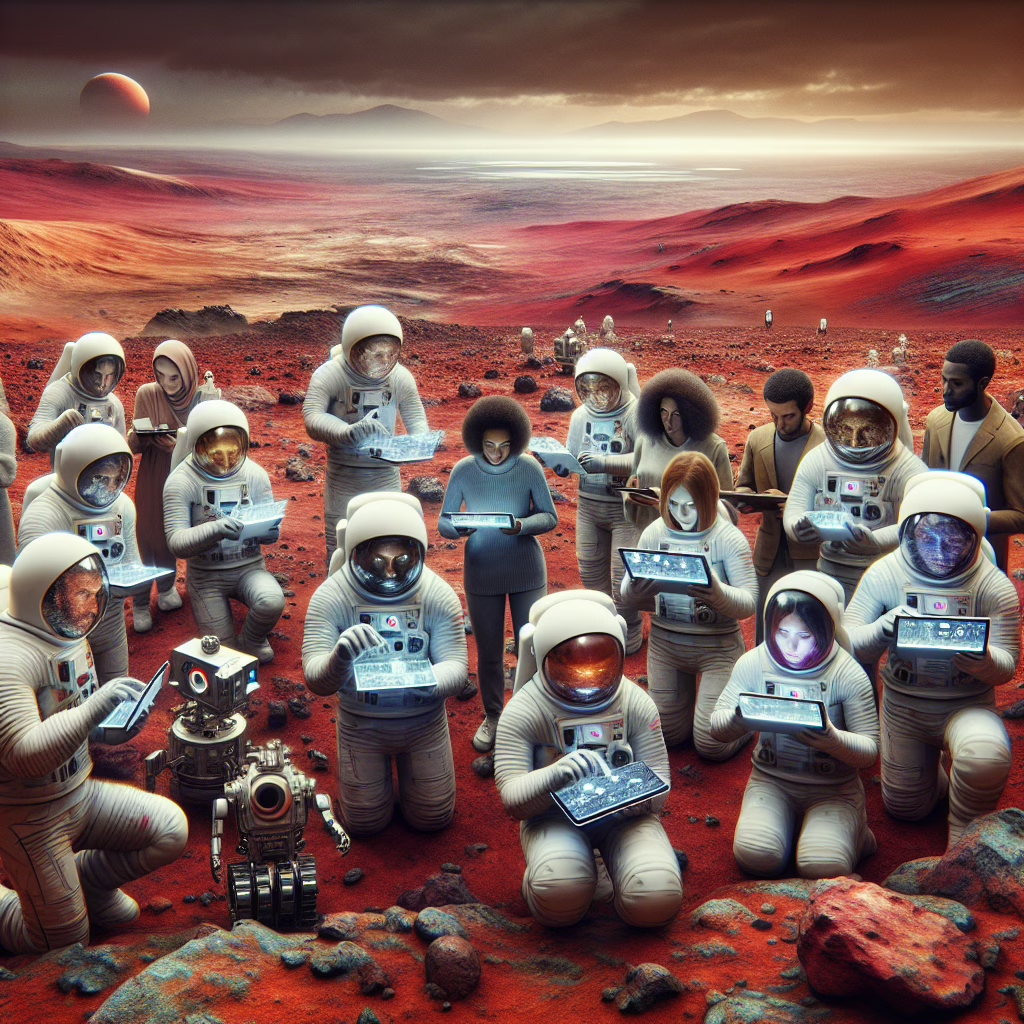In an era where artificial intelligence (AI) seems to be more present than your high school math teacher at a reunion, NASA is teaming up with Google to ensure our brave astronauts are protected as they take the big leap to Mars. Imagine this: you’re floating in zero gravity, sipping your coffee from a floating mug—what could possibly go wrong? Well, thanks to AI, quite a lot can be managed without the need for panic buttons!
Navigating the Martian Landscape with AI
The journey to Mars is no cakewalk. With approximately 140 million miles of space between Earth and our red neighbor, we can’t just send a couple of brave souls in a tin can and hope for the best! Enter AI—our digital knight in shining armor. NASA’s collaboration with Google aims to use advanced AI systems to analyze Martian data and help astronauts navigate the challenging terrain.
Picture this: an astronaut lands on Mars. They pull out their trusty tablet, powered by Google’s AI, and voilà! It processes environmental data in real-time, providing insights about potential hazards like dust storms or treacherous cliffs. It’s like having a GPS that not only tells you where to go but also helps avoid those pesky dead ends—except it doesn’t require a subscription!
Keeping Astronauts Safe with Smart Technology
Now, let’s talk safety—because who wants to be an astronaut without a safety net? This is where the magic of technology comes into play. The partnership between NASA and Google means that AI systems will monitor health metrics of astronauts throughout their journey. Think of it as having a personal trainer who doesn’t yell at you when you skip leg day but gently reminds you when you’re dehydrated or overexerting yourself.
These AI systems can track everything from heart rates to oxygen levels, sending alerts if something seems off. It’s like having your mom onboard reminding you to eat your veggies—except this time, the reminders come with fancy algorithms and data analytics!
The Role of Machine Learning
Machine learning is the backbone of this collaboration. It’s how the AI learns about the Martian environment and its potential risks. By analyzing vast amounts of data collected from previous missions and simulations, machine learning enables these systems to improve continuously.
Imagine training for a marathon by running hundreds of laps—only instead of laps, we have tons of space data! This approach allows for more accurate predictions and recommendations on Mars. So next time you hear someone complain about their Wi-Fi being slow, just remind them that we’re working on connecting astronauts to super-intelligent machines instead!
Preparing for Life on Mars
As humanity inches closer to establishing a presence on Mars, preparing for life on the Red Planet becomes increasingly crucial. This includes not only technical systems but also psychological support for astronauts during their long missions.
AI can help here too! Algorithms can analyze mood patterns based on voice tones or facial expressions during video calls back home. So yes, if someone is feeling a bit grumpy due to Martian solitude, the AI might suggest a virtual hangout or even send a motivational meme from Earth. Who knew space travel could come with such emotional support?
The Future of Space Exploration with AI
The collaboration between NASA and Google marks an exciting chapter in space exploration. With advancements in AI, our future astronauts will have more tools at their disposal than ever before. They’ll be equipped with smart technology that not only guides them through the cosmos but also ensures their safety while they’re out there making history.
- Real-time environmental hazard analysis
- Health metrics monitoring
- Machine learning for risk prediction
- Psychological support algorithms
So let’s raise our mugs (preferably not in zero gravity) to the pioneers who will soon walk on Martian soil with the assistance of cutting-edge technology! And remember: should anything go awry up there, at least they’ll have an AI buddy to help them troubleshoot those pesky problems.
As we look toward 2025 and beyond, it’s clear that NASA and Google are paving the way for safer journeys into space. And who knows? Perhaps one day we’ll all be able to take that leap together—albeit virtually—for now!
What do you think about the role of AI in space exploration? Do you think it will truly keep our astronauts safe? Share your thoughts below!
Special thanks to Daily Galaxy for inspiring this article.

